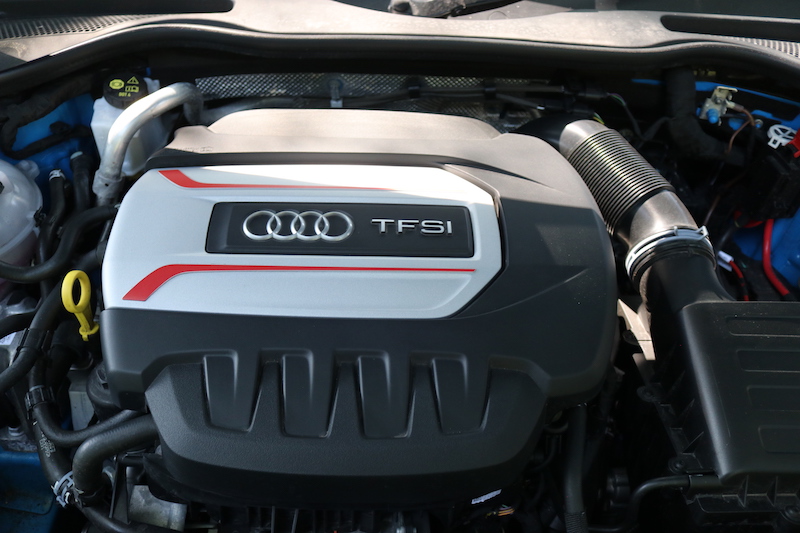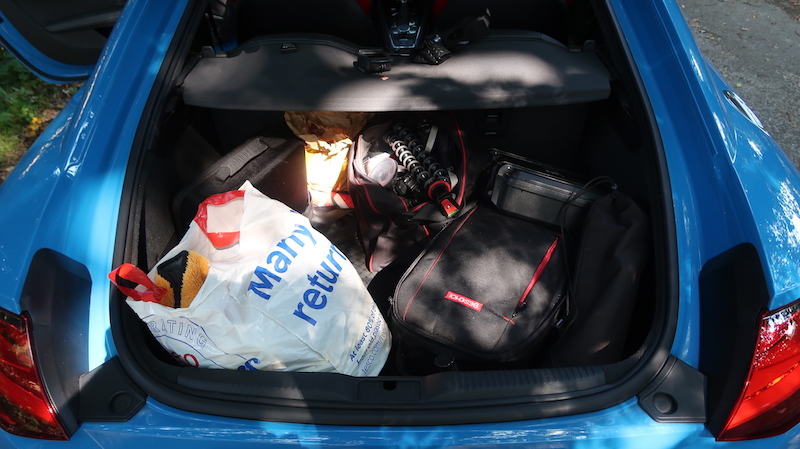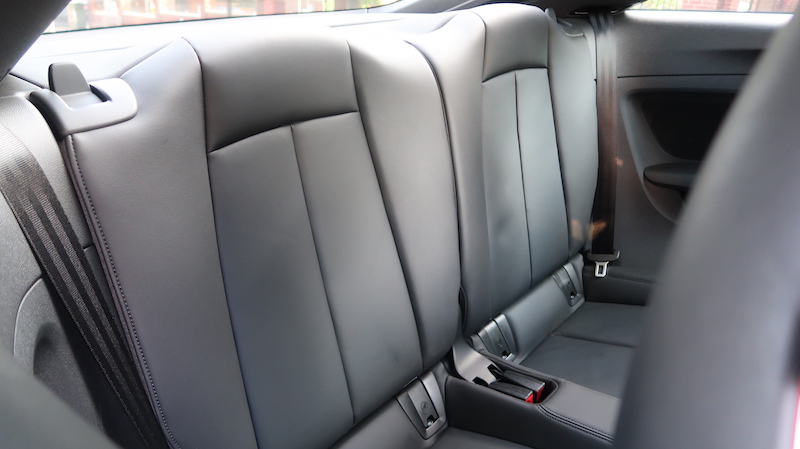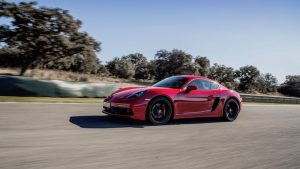The Amur Leopard, and The Audi TT – what do they have in common? Well, they’re both fast, powerful, and sadly, close to extinction. The world first laid eyes on the TT in 1995, before it was formally released in 1998, cementing itself as one of the most popular sports cars in the world. Over its 21-year life span, it has seen three generations and this car is the latest one. This may also be the last one, as the German carmaker looks to move on to something new.
I think this is a pity, as it means the motoring world will lose what I believe is an icon. The car may be German through and through, but the origin of its name is actually to be found closer to home – the Isle of Man. That’s because it’s named after the famous Tourist Trophy, which is actually a motorcycle race, but let’s gloss over that, shall we?

The Mk1 to my eyes was and still is a striking looking car, but it wasn’t without its problems. Early models suffered with stability issues at high speeds, leading to a massive recall to address these problems by fitting features such as a rear spoiler and ESP. Once that was addressed, the TT went on to be a big success although sales have dwindled, which is why the TT as we know it, will cease to exist.
However, it’s still here for the time being, so I think it’s about time I speak about this generation of TT. This isn’t just any TT, though, this is the TTS, adding more aggression, and a ride height that has been dropped by 10mm.

What’s it like to drive?
Upfront, it has the same EA888 2.0 litre turbocharged petrol engine you’ll find in the Golf R, and it’s good for 306hp along with 400Nm of torque (295 lb ft). This generous helping of performance is kept under control by Audi’s legendary Quattro all-wheel drive system (the TTS’ setup is more of a Haldex system, though) and a 7-speed S Tronic gearbox – no manuals to be found here.

The S may not have the same amount of theatre and drama as the 5-cylinder RS, but it’s still far from what you would call slow. 62 is dealt with in just 4.5 seconds, and the top speed is a very Germanic 155mph. As standard I have the Magnetic suspension, which is able to automatically adjust to changing driving conditions, and I also have a good choice driving modes, although I imagine Dynamic will be the default setting for many owners.
If you don’t fancy driving as if the world is about to end, you do also have the choice of Comfort, Efficiency, Individual, and Auto. These are all pretty self-explanatory, so I’m sure you don’t need me to explain them. As stated, Dynamic is the place to be to really get the most out of the TTS, but even when you have everything dialled to 11, it’s still civilised to drive.

The 7-speed S Tronic gearbox is responsive, seamless and slick, so as much as it doesn’t give the same involvement as a manual, it certainly helps to get the most out of the car. Whether you leave the car to its own devices or use the flappy paddles on the steering wheel, you’ll find gearchanges that are quicker than your brain can comprehend.
The engine is just as responsive, and there is very little in the way of turbo lag. All the EA888 needs is a mere poke of the throttle and you’ll find that the TTS doesn’t need to be told twice to get a move on. Mind you, that’s what you would want from any good sports car, so this probably sounds like a given.

You do get a firm ride of course, which is compounded by the optional 20” alloys, but once you get up to speed, the ride may not be quite as jiggly as you expect. You’ll definitely want to avoid potholes, though. Anyway, that’s enough about comfort, handling is what I should be discussing. As you would expect from an Audi fitted with Quattro all wheel drive, the grip through the corners is incredibly strong, giving you plenty of confidence no matter the weather. I’m not going to say the TTS feels heavy, but I’d certainly say that a Cayman feels more nimble.
There is a bit of a problem…
It certainly feels capable, there’s no doubt about that, but it feels a little numb. The steering whilst well weighted, doesn’t offer as much feedback as I’d want from a car like this, and there’s also a lack of drama, but I suppose, that won’t come as a massive surprise to some of you. Don’t get me wrong, when a forceful stab of the right pedal pins you back in your seat you’d be hard pressed to call it boring, but at same time, it struggles to really stir my soul.
The problem with the TTS is that it just simply feels too efficient, you get a sense that it doesn’t really need a driver. It all feels a bit too refined, a bit too civilised, which is fine if you want a grown up sports car, but if you’re looking for a driver’s car, the TTS may disappoint somewhat.

The noise it makes is also a little subdued on the inside; but on the plus side, you do feel cocooned in this wonderfully finished cabin. Up changes on hard acceleration will bring along the famous “DSG farts” as they are known, but for the most part, the TTS definitely lacks the character of the 5-cylinder power RS version, but you can’t have it all.
That certainly seems to be the case when you look at what comes as standard, because the car tested here has more options than a buffet restaurant. Thankfully the main features on what make this car drive as well as it does are completely standard. You also get the Audi virtual cockpit as standard, which is just as well as you get no touchscreen, which may disappoint some, but it does give the cabin a cleaner look, and it makes the inside feel a bit more driver focused, which is what this car should be all about.
Ask Aaron
Once again, it’s time for “Ask Aaron”, the segment in which you guys get to ask me questions for whatever car I’m testing. I only got two questions for the TTS, so this should be quite a quick affair.
Useable rear seats/boot space?
The boot isn’t actually too bad, offering 306 litres with the rear seats up, and 712 litres with them down. Granted, it’s not massive, but it’s not bad considering, and I reckon it will offer enough space for a weekend away.

The rear seats however, well…I’m pretty sure you’ve already made your assumptions on what the space in the rear is like. For any adult it’s going to be cramped, but for my 6’2″ frame, the results are rather comical – and cramped. So then, the rear is really best saved for children as adults and teenagers will definitely struggle for room.

Is it quick?
Yes, very – what else would you expect?
How much will it set you back?
So, the TTS certainly packs a punch, but what kind of dent will it leave in you wallet? The starting price is £45,910, and for that you don’t get THAT much as standard, but you do get 19” alloys, Audi magnetic ride, Audi Active Lane Assist, LED lights, TTS styling, Super Sport Seats finished in Nappa leather, heated front seats, Audi Virtual cockpit, Bluetooth, DAB radio, navigation, and a flat-bottomed steering wheel.
The car you see here has been peppered with a few options, though, meaning it costs £53,245. Some of the optional goodies include the Turbo Blue paint, 20” alloys, front and rear parking sensors, reversing camera, carbon inlays, red brake calipers, Matrix LED headlights, Bang & Olufsen sound system and smartphone connectivity to name a few.
Final thoughts
The Audi TTS overall is a very capable machine at covering ground at speed with very little effort. But therein lies its problem, it’s almost too good at what it does, and as a result, it has very little character. As a driver, the TTS doesn’t quite do enough to stir my soul and it doesn’t set my world alight as much as I hope it would.

Despite this, I’m sad that Audi is dropping this car from its lineup as I would argue this car has become an icon. However, some icons last longer than others, the Audi TT has had its 15 minutes of fame, and looks to be another model for the history books. Pity.

Car Obsession Rating:  (4.5 / 5)
(4.5 / 5)
Pros:
- Sure-footed handling
- High levels of grip
- Refined
- Smart, yet aggressive looks
- Strong performance
- Boot is decent, considering the type of car
- Fantastic interior
Cons:
- Lacks emotion
- Pricey once you add options
- Rear seats are barely usable
- Doesn’t make the greatest noise
Rivals
 Porsche Cayman
Porsche Cayman
Dubbed the ‘Coxster’ by Jeremy Clarkson when it first came out, the Cayman has become a popular car in its field, much like the Audi TT. Like the TT, it has a pleasant interior, only the team from Stuttgart have seen sense and not bothered with token gesture rear seats. The Cayman offers a similar kind of drive to the TT, only it’s more engaging and it feels a bit more nimble in the corners, plus you have rear wheel drive, not all wheel drive.
 BMW M2 Competition
BMW M2 Competition
Speaking of rear wheel drive, the BMW M2 Competition is another car that goes toe-to-toe with the TTS. I drove the previous M2 a while back and I thought it was an impressive thing, but since then it’s been updated with the same turbocharged six-cylinder used in the M3 and the M4, making it even more potent. If you’re looking for something more lairy compared to the TTS, the M2 Comp is definitely worth a shot.
 Ford Mustang
Ford Mustang
The Mustang isn’t the most obvious rival to the TTS, but it is a similar-ish kind of car at a similar kind of price. Go for the V8, and you’ve got something rather special indeed. It’s easy to assume that the Mustang will be good at tackling corners as rugby player is at ballet, but it’s surprisingly capable, although it cannot match the TTS in this area. It does, however, have character, something that the TTS doesn’t have in large quantities.
















